Featured image credit: Jennvirskus
When transplants come to Los Angeles with stars in their eyes, community is rarely what they’re after. But some still find it in the city’s dwindling numbers of bungalow courts. These multi-family structures took an already popular design, the California bungalow, and made it more affordable. And, in many cases, more social. And though the city is facing a situation that practically begs us to say goodbye to the bungalow court, we can’t help but love these keepsakes from such a radiant era.
A Bungalow By Any Other Name…
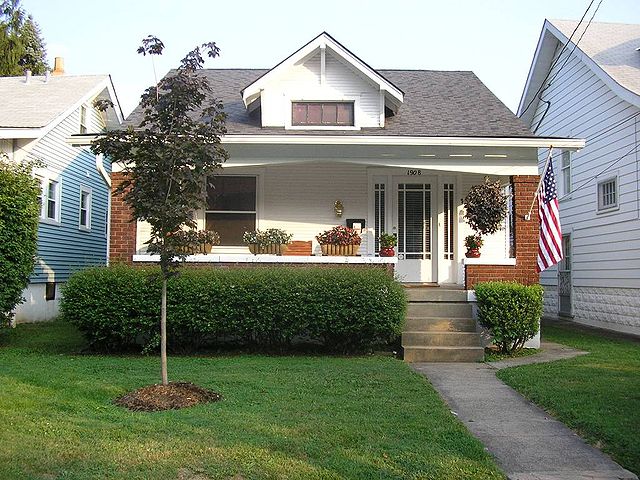
Before we get into LA’s love affair with the bungalow court, we need to look at its precursors. And that’s a bit difficult depending on where you draw the line. That’s because the bungalow court was simply an iteration of an evolving style that fit under the generous bungalow umbrella. Other designs that easily fit the bungalow designation included Prairie homes (touched on in our Craftsman homes blog) and Spanish Colonial homes (including Mission Revival designs).
At the heart of the bungalow style stood the California bungalow, a design with nuances endemic to this state. Often erroneously used synonymously with Craftsman designs, California bungalows were basically smaller variations of the Craftsman. Both borrowed heavily from an Indian style of architecture known as baṅgalo.
The differentiating features of the California bungalow stand in contrast to the lavish varieties fashioned by the renowned Greene brothers, Charles and Henry. Pioneers of the American Arts and Crafts Movement, they underscored the natural beauty and fine craftsmanship of the California bungalow with Pasadena’s Bandini house, erected in 1903. However, the enormity of this home earned the distinct sub-classification known as the ultimate bungalow.
The Rise of the California Bungalow
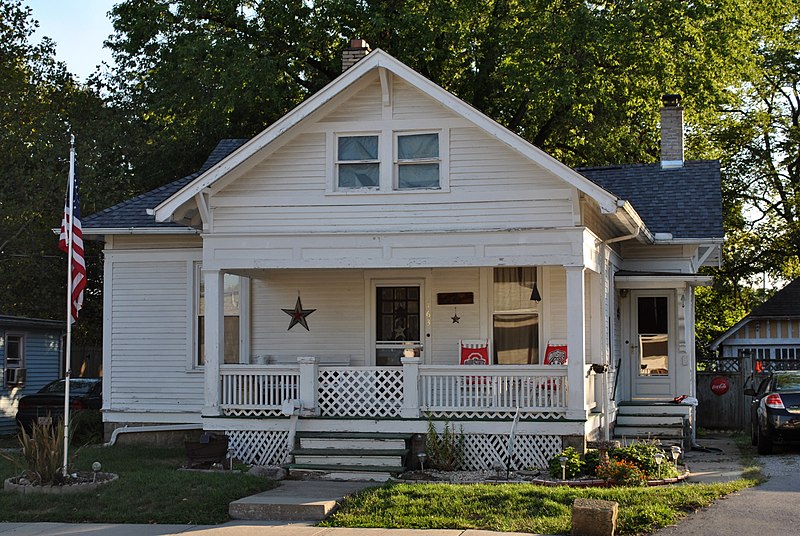
While the ultimate bungalow has its place in Los Angeles architecture history, it was the overarching California bungalow that earned widespread acclaim. Sure, press accolades at the local and national levels played a part. But the California bungalow was beloved for many more reasons.
The California bungalow’s popularity was propelled by a growing interest in the Arts and Crafts Movement. At the trend’s root was an emphasis on economic and industrial reform in response to the heavy industrialization of the Victorian era. With California’s beautiful climate, the California bungalow was a natural fit. In the early 1900s, Sears made the style’s popularity official by offering pre-cut bungalow kits similar to those they offered for Craftsman homes.
This may seem to stand in stark contrast to the anti-industrialization of the Arts and Crafts Movement. But between the DIY craftsmanship involved in bringing a bungalow to life and the relative affordability of such kits, the California bungalow was embraced all across Los Angeles.
Knocking on Bungalow Heaven’s Door
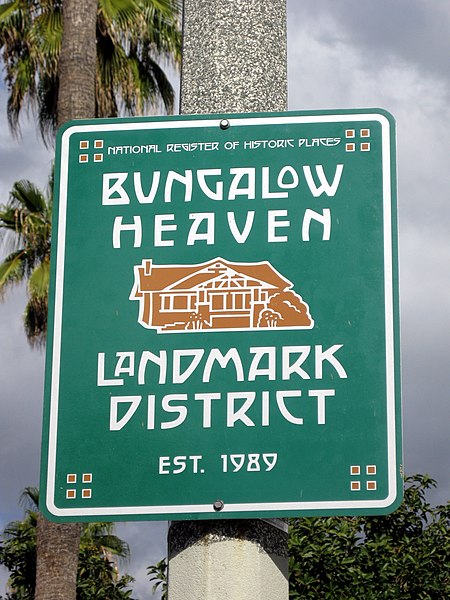
The love for the California bungalow was perhaps most evident in Pasadena. Getting its start as a resort town in the late 1800s, Pasadena became home to a 16-block stretch colloquially referred to as Bungalow Heaven. Even into the early 1900s, Pasadena attracted a heavy flock of seasonal residents. They needed simple, affordable single-family dwellings.
Meanwhile, the film industry was just beginning to take off in nearby Hollywood. Its blazing spotlights attracted not just those in search of fame and fortune, but middle-class writers, camera operators, and other crew members. Thus began the dawn of the bungalow court.
Features of the Bungalow Court
The bungalow court involved a series of bungalow homes organized in two neat rows with the units facing each other. Other common features of bungalow court designs included:
- Shared courtyard, promoting community
- Walkway bisecting the courtyard
- Bungalows one to 1.5 stories in height
- Open floor plans
- Stucco exteriors or wooden siding
- Low-pitched, sloping, gabled roofs with wide eaves
- Fountains in yard
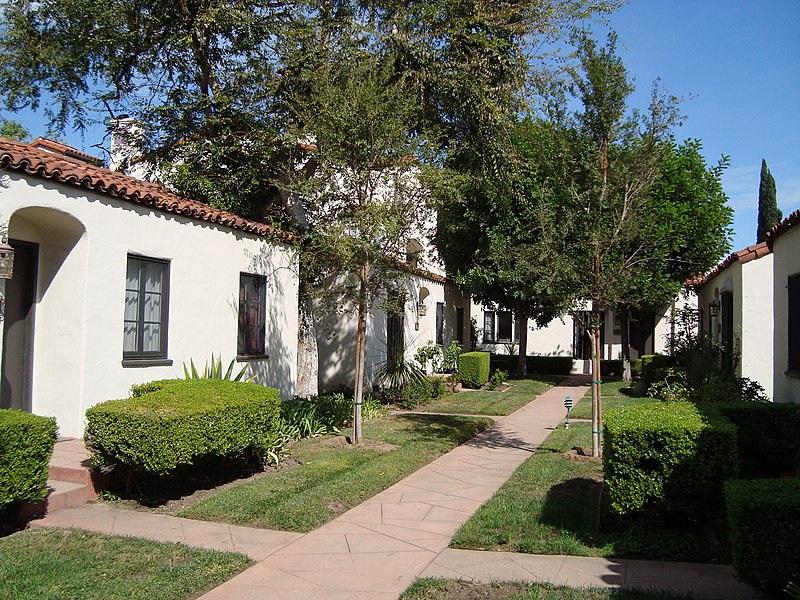
Due to the working class nature of the typical bungalow court resident, the structures were often built close to public transportation stops. For lower and middle class Angelenos, the bungalow court was a rare opportunity to rent or, in some cases, own quality, affordable housing. And for beginning investors, bungalow courts were a means of creating multi-family housing on a single plot of land without the lofty expenses of an apartment complex.
By 1930, single-family homes made up the majority of LA’s housing options. In fact, 94% of the city’s families resided in single-family homes; vastly more than any other metropolitan area in the country. But, as anyone who’s followed our Architecture 101 blogs knows, even the strongest trends never last.
The World Beyond the California Bungalow
The popularity of the California bungalow, and by extension the bungalow court, was already waning by the early 1930s. But this decline was rapidly hastened in 1934 when Los Angeles passed a law that effectively banned the bungalow court. Under the new law, all new residential properties needed to provide one dedicated parking spot per housing unit. An ordinance followed requiring every new building to provide front, side, and backyards.
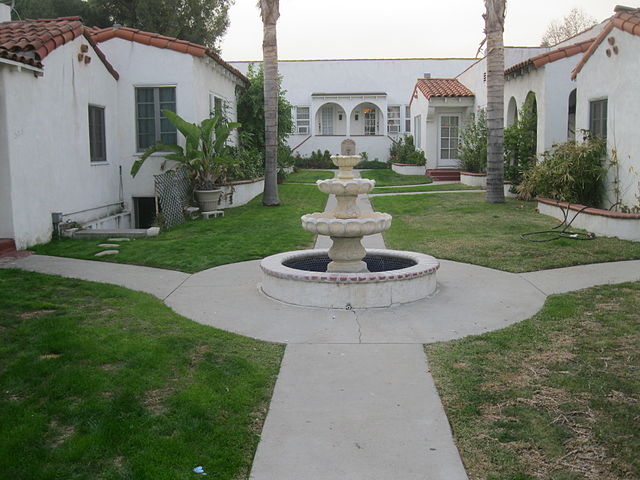
With the bungalow court consolidating the entirety of its yard to the courtyard, the model was impossible to maintain. In the 1950s, many of LA’s bungalow courts were demolished and replaced with dingbats. Offering spaces for parking beneath the housing units and enough room for yards on all sides, the dingbat was a novel solution to the city’s new housing restrictions.
Is There a Place for the Bungalow Court in Modern LA?
In 1989, appreciation for the bungalow court was resurrected in the place where it all began. Pasadena City Council passed new housing regulations requiring future multi-family housing developments to be punctuated by a central courtyard. The same year, Pasadena’s Bungalow Heaven was preserved as a historic landmark.
Despite the general reverence for the bungalow court design, we’ll most likely continue to watch these structures fade in the face of the state’s housing shortage. Currently, there are around 350 bungalow courts still standing in the Greater Los Angeles area. But with most having been constructed over a century ago, they’re often in various states of disrepair. And bringing them up to modern codes and standards is a costly affair.
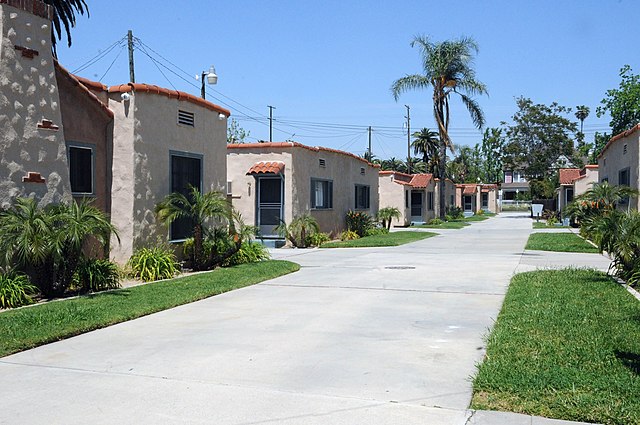
Some proponents of development have suggested returning to the bungalow court model to address LA’s need for new housing. But just as many, if not more, argue that the bungalow court doesn’t go far enough to address the problem. Apartment complexes could be built on the same plots of land.
Therefore, despite still being popular with Angelenos seeking a sense of community, the remaining bungalow courts will likely continue to be razed in favor of structures that offer more units. And that’s understandable. But hey, we’ll always have Bungalow Heaven.
With a brand that says as much as JohnHart’s, Senior Copywriter Seth Styles never finds himself at a loss for words. Responsible for maintaining the voice of the company, he spends each day drafting marketing materials, blogs, bios, and agent resources that speak from the company’s collective mind and Hart… errr, heart.
Having spent over a decade in creative roles across a variety of industries, Seth brings with him vast experience in SEO practices, digital marketing, and all manner of professional writing with particular strength in blogging, content creation, and brand building. Gratitude, passion, and sincerity remain core tenets of his unwavering work ethic. The landscape of the industry changes daily, paralleling JohnHart’s efforts to {re}define real estate, but Seth works to maintain the company’s consistent message while offering both agents and clients a new echelon of service.
When not preserving the JohnHart essence in stirring copy, Seth puts his efforts into writing and illustrating an ongoing series entitled The Death of Romance. In addition, he adores spending quality time with his girlfriend and Romeo (his long-haired chihuahua mix), watching ‘70s and ‘80s horror movies, and reading (with a particular penchant for Victorian horror novels and authors Yukio Mishima and Bret Easton Ellis). He also occasionally records music as the vocalist and songwriter for his glam rock band, Peppermint Pumpkin.


